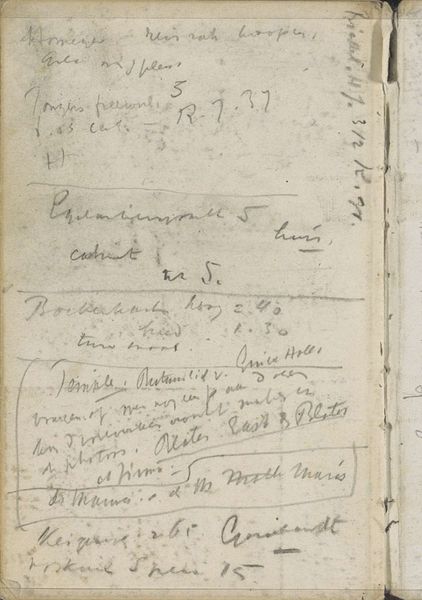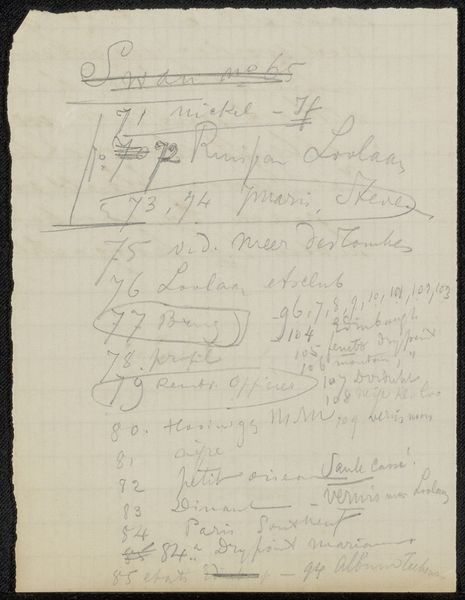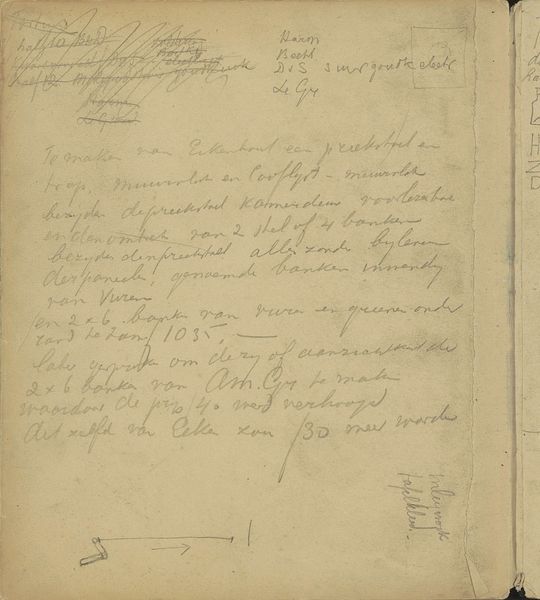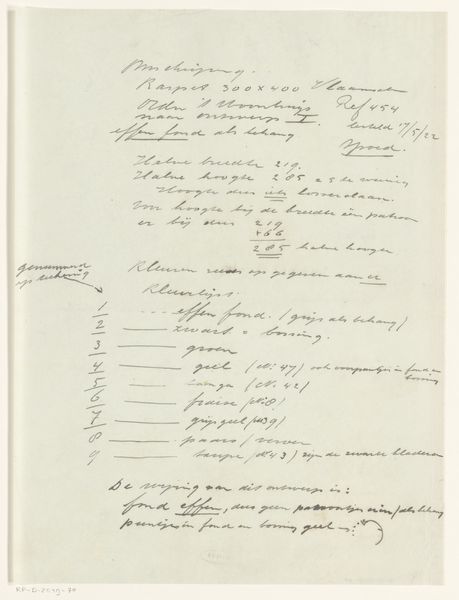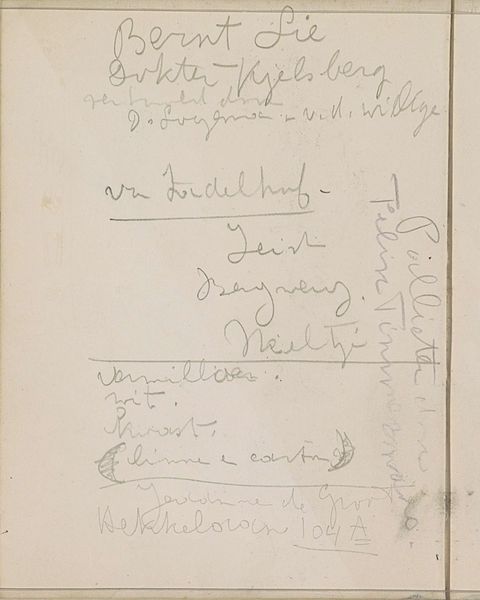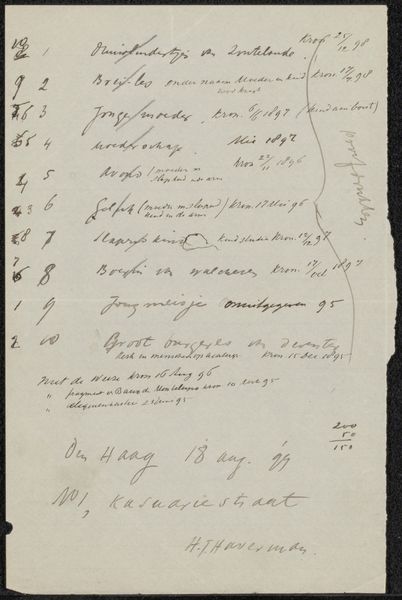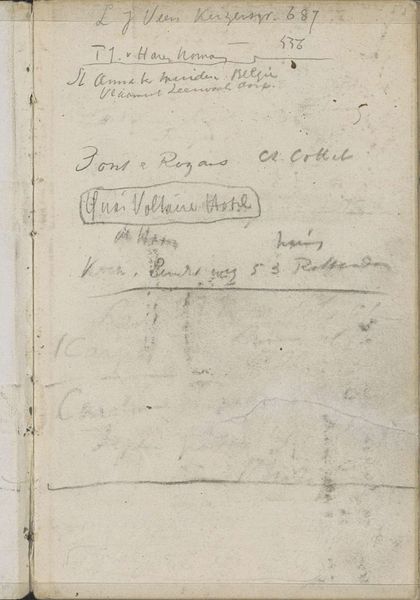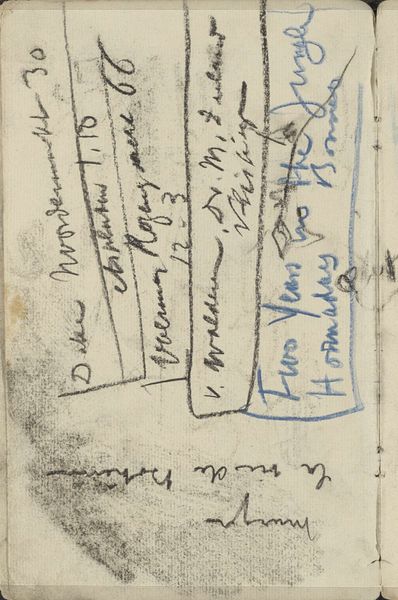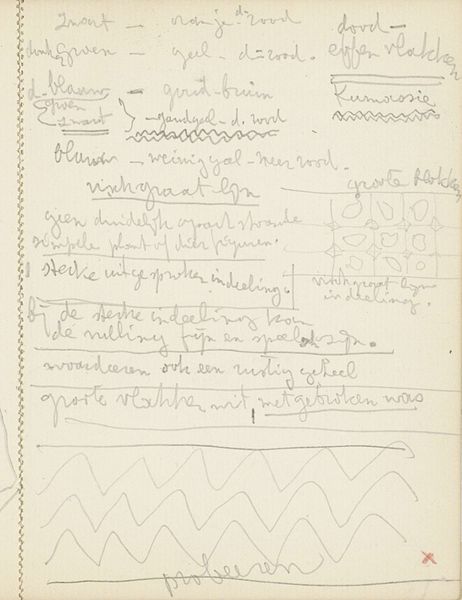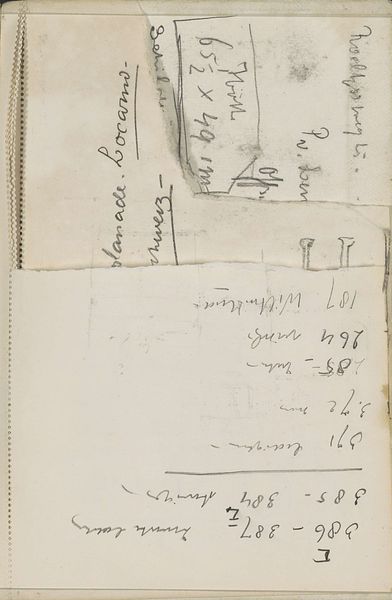
drawing, mixed-media, paper, pencil, pen
#
portrait
#
drawing
#
mixed-media
#
hand written
#
hand-lettering
#
hand drawn type
#
hand lettering
#
paper
#
personal sketchbook
#
idea generation sketch
#
hand-written
#
sketchwork
#
geometric
#
pencil
#
abstraction
#
sketchbook drawing
#
pen
#
sketchbook art
Copyright: Rijks Museum: Open Domain
Curator: Welcome. We’re looking at "Driehoek" by Reijer Stolk, a mixed-media drawing on paper that was made sometime between 1906 and 1945. It's currently held in the Rijksmuseum collection. What strikes you about it at first glance? Editor: It has a decidedly ephemeral feel, almost as if we’re looking at something not quite meant for our eyes. There’s this great sense of spontaneity – like catching a glimpse into the artist's private process. Curator: Indeed. Sketchbooks offer an interesting point of access to understanding the creative and, potentially, political climate surrounding artistic production. You see elements here that reflect an early interest in abstraction emerging at that time, and potentially some commentary on trade. Editor: Absolutely. I’m really drawn to the contrast between the more carefully rendered geometric form – the titular triangle – and the more gestural handwritten text. It suggests an attempt to unite the cerebral and the intuitive aspects of creation. The varied weights of the pencil and pen, and that specific kind of paper, signal a very tactile making. Curator: The materials themselves also have their own histories and socio-political contexts. Pencils, paper, and ink become tools, especially within educational structures. These materials allowed Stolk to participate within and offer critical thought toward, larger movements. Editor: Right. And the format itself is interesting: the open notebook shows the means of knowledge production and artistic experimentation. We don’t get to see the artist's process this plainly in many artworks. There's a clear lack of polish, it allows for this material immediacy to jump off the paper and address labor more directly. Curator: Seeing these elements gives us a glimpse into Stolk’s method. In that way it helps break down conventional understandings of his finished artwork. Editor: I agree completely. It’s like peeling back a layer and finding something incredibly raw and vital. It shows that labor is present at every part of this piece, as much as any kind of cerebral construction is. Curator: Ultimately, by inviting viewers into Stolk's private workspace, “Driehoek” also extends an invitation for them to engage directly in his creative dialogues. Editor: Absolutely, I find this particular piece so enlightening and it speaks to how labor is central in production!
Comments
No comments
Be the first to comment and join the conversation on the ultimate creative platform.
